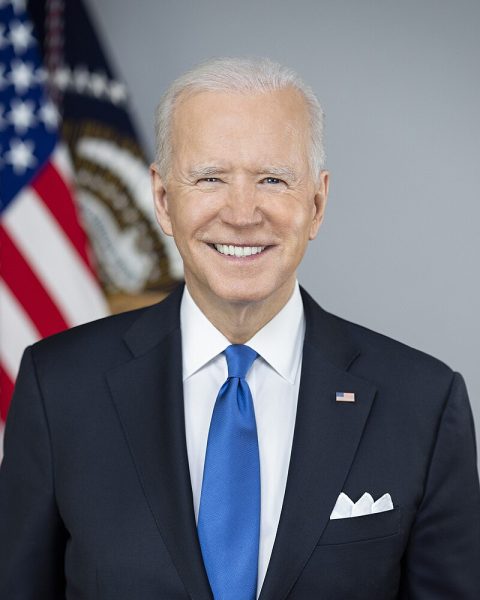Zweigenhaft featured by AOC
New York Congresswoman Alexandria Ocasio-Cortez has been making waves with her bold, unapologetic progressivism and charismatic demeanor. Some say her behavior is unbecoming of a congresswomen, but others see her enthusiasm as just the type of energy that Washington desperately needs.
One of the ways she is breaking congressional orthodoxy, is by continually keeping in touch with her constituents through Instagram, answering questions on live stream and sharing her experience as a freshmen congresswomen. In one of her posts, she quotes research about congressional diversity from Dana Professor of Psychology Richie Zweigenhaft.
“We still have a LOT of work to do,” Cortez wrote in her post. “A lot more people need to run in 2020 and beyond so Congress can actually reflect America in all ways, class, race, gender, identity, etc.”
The data comes from Zweigenhaft research on diversity in positions of business and political leadership. Zweigenhaft found that white men make up only 38 percent of the U.S. population, but almost 80 percent of Congress.
For the past three decades, Zweigenhaft and Professor Emeritus of Psychology and Sociology at University of California Santa Bill Domhoff have been monitoring diversity in what sociologists call the power elite the triumvirate of corporate, political and military positions which hold the most influence over U.S. economics and politics. Their finding has been that diversification of the power elite happened slowly, and in different ways for different groups.
In his latest article The Election of 2018: Diversity in the 116th Congress, Zweigenhaft analyzes how the 2018 midterm elections affected diversity in Congress. His finding is that although women and people of color make advances, their is still a way to go before the makeup of congress accurately reflects U.S. demographics.
According to Zweigenhaft, if women and people of color faced no barriers in terms of economic ability, voter prejudice, and electoral opportunities, the makeup of congress would reflect the U.S. population.
“In 1956, the year, The Power Elite was published, Margaret Chase Smith, who won a special election to the House in 1940 to replace her husband. when he died, then was elected to four more terms before she ran for and won a Senate seat in 1948, was the only woman in the Sen
Ate,” Zweigenhaft wrote. “So, a mere 1% were women, when the “expected” percentage, if women had an equal chance of being elected, was about 50%.”
The single biggest jump for women came in the elections of 1992, when the Supreme Court nomination of Justice Clarence Thomas, who faced allegations of sexual harassment from one of his former employee’s Anita Hill, placed a spotlight on issues of gender discrimination and sexual harassment.
By 2000, women made up 13.3 percent of the House, and 9 percent of the Senate, and the number has increased since then, with each election generally adding a few women. In 2018 year, women went from making up 85 members of congress, to 102. All but one of the 37 newly elected women were democrats. The percentage of women among Republicans in the house actually decreased from 9.8 % to 6.5 %.
The quantity of people of color did not see an increase in numbers in the Senate, but in the House of Representatives, people of color made significant gains. The percentage of African Americans in the House increased from 10.7 % to 12 %, Latinxs increased from 9.4 percent to 11.3 percent, and Asian Americans increased from 3 % to 3.2%.
Zweigenhaft concludes that the Democratic party, not the Republican party, is the party which best represents America’s diverse population, while the Republican party represents mostly white Christian men.
“This past election, therefore, revealed meaningful increases in all dimensions of the diversity that is present in a multicultural nation consisting of descendants of indigenous people, slaves, and immigrants, along with millions of newly arrived immigrants from every region of the world,” wrote Zweigenhaft. “But the two parties have been going in opposite directions on diversity for more than fifty years. Importantly, the Democrats gained a majority in the House in 2018, which means that the party of diversity will have more leverage as it confronts both an executive branch and a Senate controlled by a Republican Party that has become the party of fiercely conservative white
Christian men. The fate of the United States as a diverse and inclusionary nation, as opposed to
one with white male dominance in the name of Christianity, racism, and nativism, is increasingly
in the hands of the Democratic Party, especially as more and more white wo
men and people of color run for and are elected to Congress as attention turns to the fateful 2020 election.”
Members of the Guilford community expressed their thoughts on diversity in leadership.
“Congress needs to represent different cultures,” said first-year Amina Osman.
Others echoed this sentiment.
“With the opinion of just white men, you won’t see any change,” said sophomore Kyia O’Neal.








